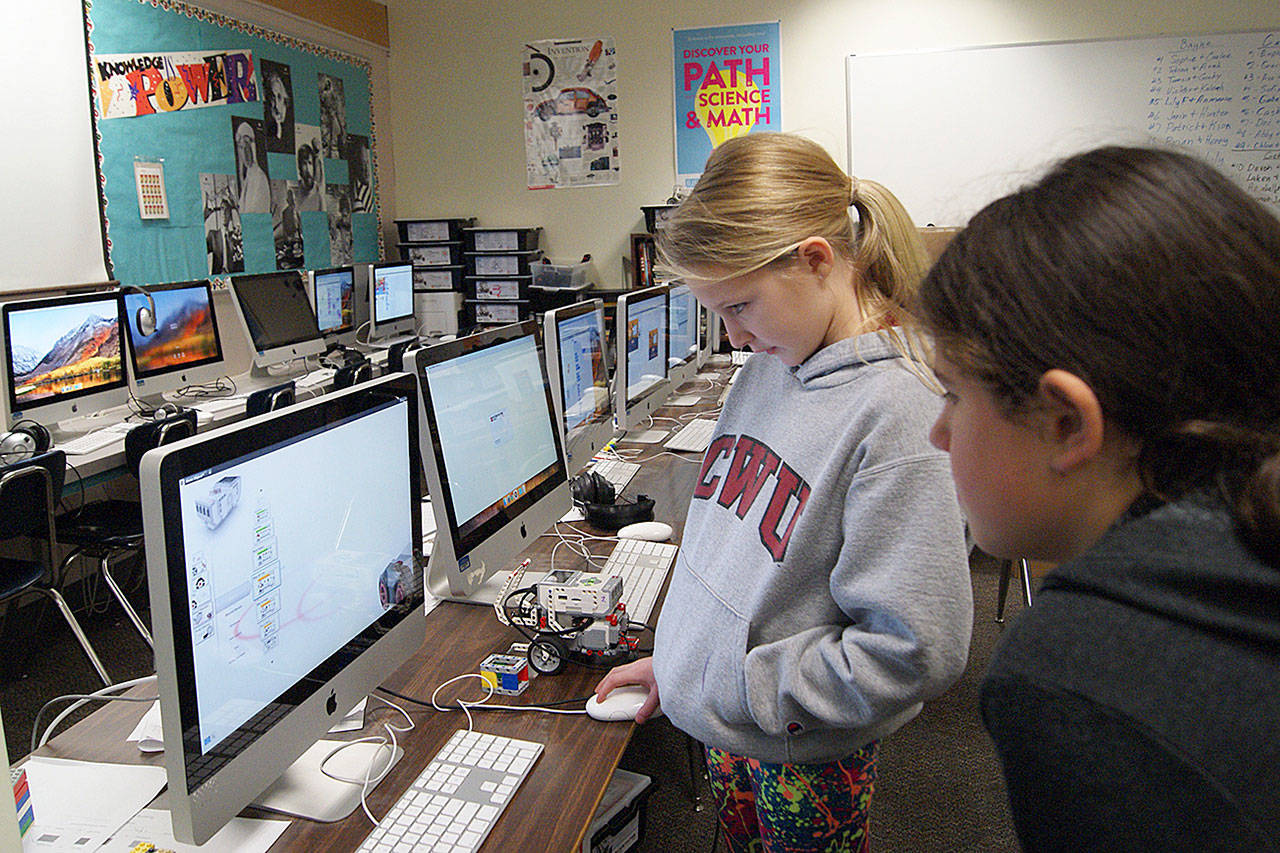Coupeville Elementary is getting students ready for the future with a new STEM program, being offered for the first time this year.
The idea blossomed when educators realized how popular their after-school educational clubs were and wanted to bring that type of deeper, interactive learning to all students.
“It evolved out of science club, technology club and the robotics team,” Principal Dave Ebersole said. “It’s something we offered this year in order to give all our kids exposure into all of those areas … It’s an enrichment program.”
Those clubs were being advised by long-time teacher Mark Noste, who agreed to also be the new STEM teacher after Ebersole approached him last year.
“We wanted an opportunity for all the kids,” Ebersole said — not only for those students whose parents had the time and means to bring them to after-school activities, he added.
Noste said the students seem to be enjoying the new program, and he’s enjoying teaching it.
And with hands-on activities such as Lego robots, Bluetooth programming, concrete bridges and gaming-style computer coding, what’s not for a young student to love?
The students got their hands dirty mixing concrete with various amounts of water, then molding them into bridges. After they dried, students added various amounts of weight to them until they broke and recorded the results.
Last week, students participated in the “Hour of Code,” a global initiative to help introduce students into computer science. Another tool students use is a free MIT-provided programming website called Scratch and Scratch Jr, Noste said.
An outdoor activity for the STEM class had students taking a small field trip to the Coupeville Main Street pedestrian bridge to see a work of concrete engineering in real life and get some fresh air.
“My favorite part is probably watching the kids program a robot,” Noste said. “Watching them program, build it and then having it perform the way the want it to is pretty rewarding.”
The biggest challenge so far, he said, has been keeping their large amounts of materials organized, which isn’t so bad. And he wouldn’t mind a larger classroom, but he can’t complain, he said. The STEM classroom provides 30 desktop computers and copious amounts of Legos.
“A lot of those kids are very familiar with smartphones and apps, but not that familiar with a desktop computer,” Noste said.
Some kids have gotten exited about science and technology from the class, then joined the additional after-school programs, Noste said.
The STEM class is designed to get students thinking in terms of math and science and introduce them to concepts that will be useful throughout their life, he said.
The class is taught daily, with each grade receiving between 30 minutes to a half hour total time weekly.
The STEM program has been used successfully at other Washington state schools, Ebersole said, and it seems to be doing well here too based off of feedback from parents and students.
“It’s a program that I think is going to continue to evolve,” Ebersole said.


